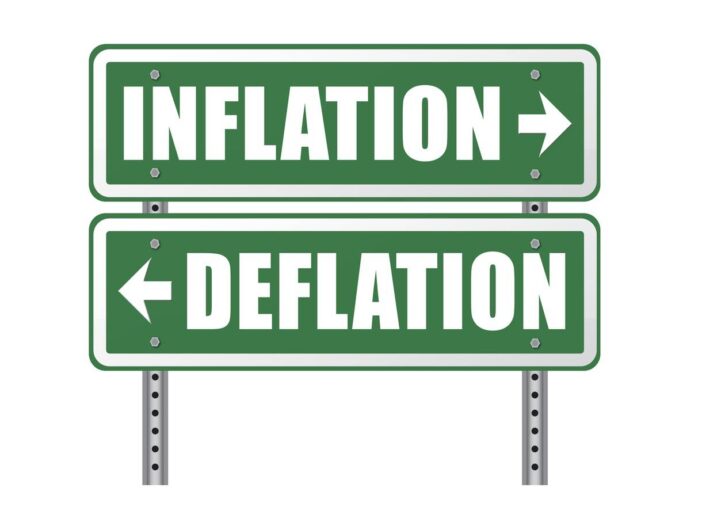Deflation: It’s a word that most Australians aren’t used to hearing.
We’ve been blessed with growth and the inflation it brings for more than two decades. Ensuring that the deflationary trap has never managed to claim our economy.
Now though, after a 22-year run, deflation is back.
Thanks to a grim June quarter, annual inflation tumbled to -0.3%. Our first (annual) negative record since March 1998.
And when I say it was a grim quarter, I mean really grim.
Inflation suffered its biggest quarterly fall since the ABS began tracking it in 1948. Informing us that the prices for goods and services are tanking. Or at least, that’s what you’d expect to happen…
In reality, this latest bout of deflation is a little deceptive.
In fact, three sectors are almost entirely responsible for the negative result. They are childcare, automotive fuel, and pre-school/primary education.
Childcare for instance reported a 95% drop in prices. Not because of a lack of demand, but simply because the government has made it free. A factor that really makes this data a huge outlier.
Similarly, the price of pre-school and primary school education fell by 16.2%. Which, like childcare, is largely due to the NSW, Victorian, and Queensland governments making pre-school free.
The price of fuel was the only genuine loser of the period. Falling by 19.3%, due to the need for less driving during our lockdown.
Free Report: ‘Why Your Bank Dividends Could Be Under Threat’
As the ABS’s chief economist Bruce Hockman commented:
‘Excluding these three components, the CPI [consumer price index] would have risen 0.1 per cent in the June quarter.’
So, as an investor, what does this bizarre return of deflation mean for you?
The bigger picture
Typically, when an economy is experiencing deflation, it is an uneasy time.
It would normally suggest that prices are falling. Usually because of a lack of demand for goods and services. Or more rarely, an oversupply of goods and services.
Because of this, deflation is usually accompanied by higher unemployment rates and recession.
For investors, it also means asset prices tend to fall. Be it stocks, gold, property, or whatever else. Cash is typically the only asset that thrives during a deflationary period. An outcome that can often lead to a liquidity trap if people hoard their money.
That’s why central banks are so obsessed with inflation. Because they know that if deflation isn’t dealt with, it can spiral out of control. Just like it did for Japan throughout the ‘90s.
Therefore, history and logic suggest that in times of deflation, it may be best to get out of the market.
But is it right to get out of the market right now?
The answer, I suspect, is no.
In fact, I believe this may be one of the few occasions where deflation is actually a good thing. Let me explain…
First of all, we need to understand what the data is telling us. Because like any economic measurement, the CPI does not exist in isolation. That’s why the Bruce Hockman quote above is so important.
What we have is a very unique kind of deflation. The kind that has been induced via government intervention. Namely the provision of free childcare and schooling.
That doesn’t represent a lack of demand, but rather a reallocation of income. Giving parents the freedom to spend that money elsewhere. Which is why some parts of the CPI were actually rising in price.
Cleaning and household products rose by 6.2%. Furniture climbed by 3.8%. And major household appliances lifted by 3%.
In other words, while we may have recorded a deflationary result, demand hasn’t disappeared yet.
A rare precedent
As rare as it may be, there is an argument to be made for ‘good deflation’.
Switzerland has been trying its hardest to prove that fact since 2015. Somehow managing to juggle low or negative inflation, whilst still maintaining a low unemployment rate and improved spending power.
How did they manage to achieve this?
Well, the jury is still out on any definitive consensus. But one of the leading theories is that there are two types of deflation. One which is driven by a decrease in aggregate demand (bad deflation). And another which is driven by an increase in aggregate supply (good deflation).
As Investopedia explains:
‘When deflation is driven by supply, prices are depressed but incomes and output (as in GDP) increases. This can create a positive situation for the economy.’
Granted, I don’t believe that our current deflation is totally due to an abundance of supply. I’m sure plenty of sectors are under pressure since demand simply isn’t possible during a lockdown.
However, what I do think we’re seeing is that demand shift to other parts of the economy.
So, while people may not be able to splurge on dining out, they might instead buy a new dining table to eat at home. This is what I mean by shifting demand, a phenomenon that has always existed but has been exacerbated by the current pandemic.
For investors, this means that you should expect certain sectors to thrive while others wane. Something that has already become very apparent in recent weeks, with the dominance of tech stocks.
More importantly, it could be the start of a new trend.
Because if the prices of raw materials or energy — such as automotive fuel — stay depressed, then that could make production cheaper. And for the companies already thriving, that could mean even more growth to come.
It may seem strange, but this bout of deflation could be the ticket to even more growth.
Regards,
 |
Ryan Clarkson-Ledward,
Editor, Money Morning
PS: Four Well-Positioned Small-Cap Stocks: These innovative Aussie companies are well placed to capitalise on post-lockdown megatrends. Click here to learn more.

